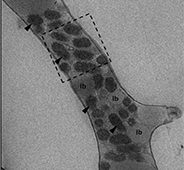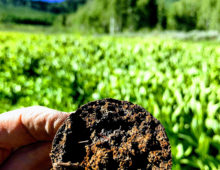Characterizing Viruses in Antarctica
Characterizing viruses in extreme environments may facilitate a better understanding of the role that viruses play in the dynamics and evolution of complex microbial communities. [Read More]
 Some beneficial plant associated fungi house bacteria inside their cells which impact fungal and plant health. Recent studies show that some fungal endosymbionts manipulate reproduction of their hosts, and may influence plant ecosystems. This project focuses on endosymbionts and fungal reproduction, expanding knowledge on the complexities of microbiome interactions. These fungi are industrially important because they produce valuable lipid products. Our goal is to learn about optimal conditions for fungal health and apply that knowledge to increase crop health and produce alternative energies. [Read More]
Some beneficial plant associated fungi house bacteria inside their cells which impact fungal and plant health. Recent studies show that some fungal endosymbionts manipulate reproduction of their hosts, and may influence plant ecosystems. This project focuses on endosymbionts and fungal reproduction, expanding knowledge on the complexities of microbiome interactions. These fungi are industrially important because they produce valuable lipid products. Our goal is to learn about optimal conditions for fungal health and apply that knowledge to increase crop health and produce alternative energies. [Read More] Using remote sensing, metagenomics and machine learning, we are building new ways to predict of how plant and microbial metabolism interact to influence biogeochemistry across watersheds in the headwaters of the Colorado River. [Read More]
Using remote sensing, metagenomics and machine learning, we are building new ways to predict of how plant and microbial metabolism interact to influence biogeochemistry across watersheds in the headwaters of the Colorado River. [Read More]